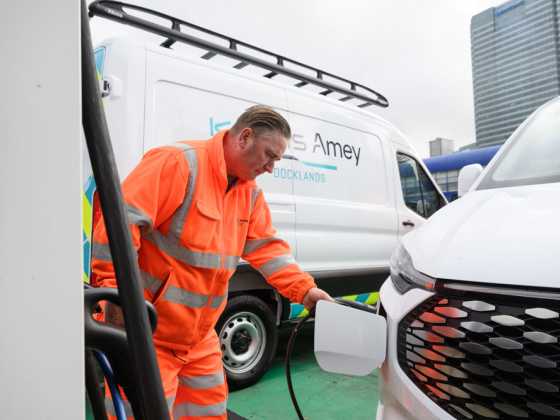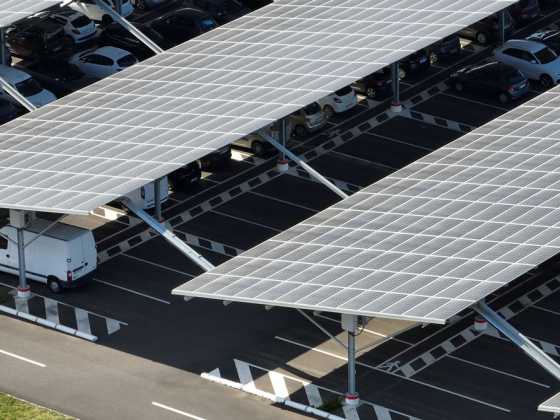Accessible and inclusive EV design

A new report published by Motability and the Energy Saving Trust has highlighted the barriers to making the design of electric vehicles accessible for disabled people, in particular, those that use wheelchairs, and how these could be addressed
The charity Motability has previously conducted extensive research into the accessibility of EV charging infrastructure, which led to the creation of the BSI standard for accessible public chargepoints (PAS 1899).
Following this, the charity has worked with the Energy Saving Trust to find out the accessibility issues with the vehicles themselves, with a particular focus on wheelchair accessible vehicles (WAVs).
The research found that the requirements of disabled people are not being sufficiently considered in the design and production of EVs, with WAV users in particular raising concerns about finding models suitable for their needs.
What are the barriers?
A survey of disabled WAV users conducted as part of the research found that over 70 per cent of respondents have considered driving an electric WAV, with over 25 per cent planning to get one as their next vehicle. However the limited choice of suitable vehicles available is a key concern for disabled people, with 85 per cent of respondents listing it as a significant barrier for them. Examples of unsuitable design features included some electric vehicles not being tall enough for some seated wheelchair users, or not enough boot space for mobility equipment.
With the control systems in EVs becoming increasing advanced, the report identifies that more engagement is needed to ensure that new features work for disabled people. The placement of the battery and the charging socket are highlighted as key accessibility concerns for EVs. The position of the battery is a key concern for adapters and converters, and is a particular challenge to producing small WAVs, which are the preferred size for many WAV users
Adaptation and conversion industry
As well as research with disabled drivers and passengers a number of surveys and interviews were also conducted with key industry stakeholders. This included vehicle manufacturers and the adaption and conversion industry which provide mobility solutions for disabled motorists.
Responses from the adaptation and conversion industry found that they have limited engagement with vehicle manufacturers. This makes it difficult for them to obtain technical information about the vehicles they need in order to meet the accessibility requirements of disabled customers.
Motability Operations, which carries out the day-to-day running of the Motability Scheme, also contributed to the research. Over 630,000 people currently use the Motability Scheme, and more than five per cent of all vehicles used by Scheme customers are WAVs. Around 10 per cent of all cars on the Motability Scheme have an adaptation.
Changes to EV design
The report makes a series of recommendations for overcoming the challenges identified relating to accessible and inclusive EV design.
So far, missing engagement with OEMs has been identified as a key barrier for both the adaptation and the conversion industry. In particular, adapters struggle to establish any form of communication with OEMS. Motability Operations has a wide pool of industry contacts, which they should use to facilitate business introductions and set up shared meetings, supporting adapters and converters in establishing meaningful relationships with OEMs. Motability Operations’ will help to focus attention on the needs of adapters and converters and can foster trust between all involved stakeholders.
Another recommendation is to establish guidelines on accessible design principles in collaboration with disabled users and the wider specialist automotive industry.
Missing guidelines on precise design principles is a barrier for vehicle design. An interview with a design and engineering company implied that often, only a small subset of vehicle attributes must change to make the base vehicle suitable for conversion or adaptation. Early engagement on the inclusive design of new models with converters, adapters, users and other relevant stakeholders will enable the automotive industry to agree on key principles.
The report calls for the ZEV mandate to incentivise the production of WAV base vehicles. One potential mechanism that could be utilised to guarantee supply is to offer more certificates for WAV base vehicles. This possibility was recognised by the Department for Transport (DfT) in the ‘incentivisation longlist’ produced as part of the ZEV Mandate consultation. Through this project, Motability and the Energy Saving Trust had encouraging conversations with DfT regarding the design of the ZEV Mandate.
The number of additional ZEV mandate certificates should be decided in consultation with OEMs and converters. Additional WAV certificates could be
divided between them to encourage greater collaboration. This would also allow converters to sell certificates as an additional revenue stream.
The DVLA registration process should also be reviewed to see if a dedicated WAV marker could be added to the vehicle description to enable this ZEV mandate feature. This would make it simpler to implement multiple certificates and easier to track the development of the WAV market.
Strengthen the plug-in grant
The report also says that the Plug-in Car Grant (PiCG) should be strengthened to support customers with higher upfront costs for EVs.
A PiCG for WAVs has been retained, offering funds for 35 per cent of the price of an eWAV conversion up to a max of £2,500 while the base vehicle must cost below £35,000. A total of 1,000 grants have been made available per year. However, take up is low and awareness is low.
Over half of survey respondents (51 per cent) asked in this research said they were unaware of the PiCG scheme. Of those who were aware of the PiCG, 19 per cent said the eligible cars were unsuitable for them and highlighted that it does not make the high upfront costs more affordable.
Based on conversations with the adaptation and conversion industry, in addition to insights into WAV users, it can be concluded that the scheme is too restrictive to drive the widespread adoption of eWAVs. In order to boost take up and eWAV development, the report says that the PiCG scheme should be advertised more widely to drive engagement. The cost cap for base vehicles should be raised to reflect typical EV base vehicle costs. It says that the level of grant funding should be made more generous to reflect the additional cost of adapting EVs.
It also says that more grants should be made available per year to reflect the number of WAVs being produced annually and the need to transition to electric mobility. What’s more, suitable second-hand vehicles should be made eligible under the scheme.
The report also says that OEMs of eligible base vehicles need to be compelled to list them as PiCG eligible. Currently no Ford, Fiat or Volkswagen vehicles are listed despite these OEMs producing some of the most popular base vehicles.
Making the transition accessible to all
Barry Le Grys, chief executive officer of Motability said: “With the sale of new petrol and diesel vehicles set to end in 2030, we want to ensure that the transition to EVs is accessible to all. While we continue to make progress on the accessibility of public chargepoints, it’s clear from this research that further work is needed on vehicle design. There is a risk that disabled people could lose the vital independence that having access to private transport brings if these issues are not addressed by 2030.
“We welcome the findings of this research from Energy Saving Trust, which provides valuable insight from disabled people, vehicle manufacturers and the adaption and conversion industry. We now be considering how we can work with our partners including Motability Operations to encourage further engagement on this issue and develop practical solutions for accessible vehicle design.”
Tim Anderson, head of transport at the Energy Saving Trust, says: “This research highlights the significant barriers faced by disabled people and the industry when it comes to the design and provision of accessible vehicles. We hope the recommendations given in this report will help to address these barriers and, once actioned, will support an equitable transition to electric vehicles. We will continue to provide leadership, support research and deliver programmes in this area research and delivery in this area, making transport inclusive to all.”






